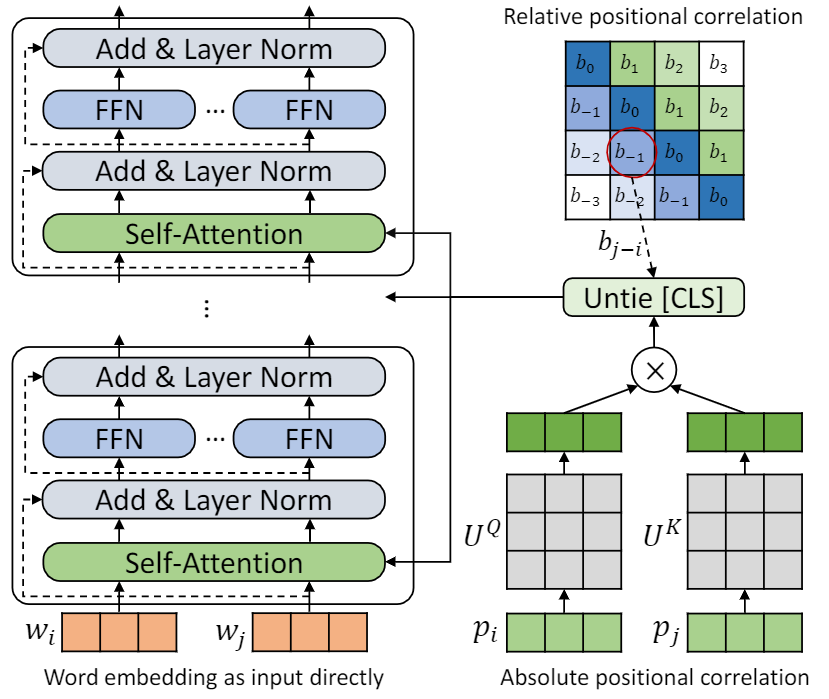Rethinking Positional Encoding in Language Pre-training
In this work, we investigate the positional encoding methods used in language pre-training (e.g., BERT) and identify several problems in the existing formulations. First, we show that in the absolute positional encoding, the addition operation applied on positional embeddings and word embeddings brings mixed correlations between the two heterogeneous information resources. It may bring unnecessary randomness in the attention and further limit the expressiveness of the model. Second, we question whether treating the position of the symbol \texttt{[CLS]} the same as other words is a reasonable design, considering its special role (the representation of the entire sentence) in the downstream tasks. Motivated from above analysis, we propose a new positional encoding method called \textbf{T}ransformer with \textbf{U}ntied \textbf{P}ositional \textbf{E}ncoding (TUPE). In the self-attention module, TUPE computes the word contextual correlation and positional correlation separately with different parameterizations and then adds them together. This design removes the mixed and noisy correlations over heterogeneous embeddings and offers more expressiveness by using different projection matrices. Furthermore, TUPE unties the \texttt{[CLS]} symbol from other positions, making it easier to capture information from all positions. Extensive experiments and ablation studies on GLUE benchmark demonstrate the effectiveness of the proposed method. Codes and models are released at https://github.com/guolinke/TUPE.
PDF Abstract ICLR 2021 PDF ICLR 2021 Abstract



 GLUE
GLUE
 QNLI
QNLI
 C4
C4